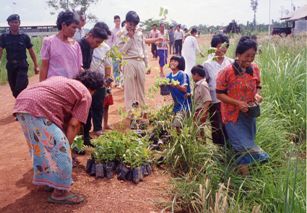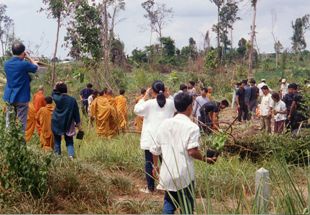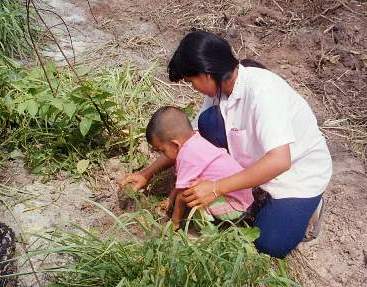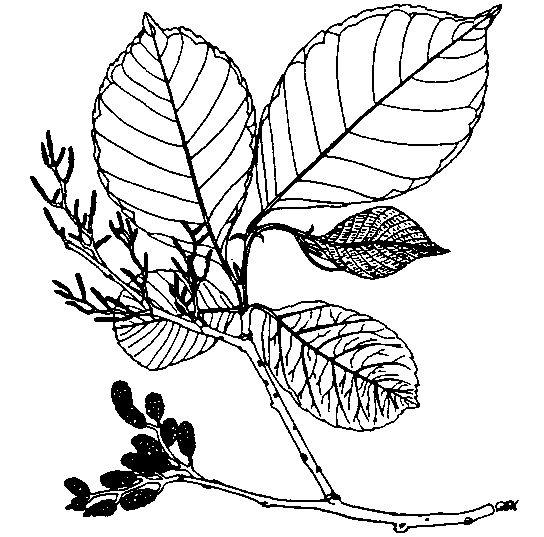


Alnus nepalensis
Indian alder

Origin
South Asia
Ecology
Annual rainfall: 800-3700mm.
Normal temperature range: 0-26°C.
Altitude range: 100-3000m.
Seasonal adaptability: tolerates 4-8 months dry season.
Soils: prefers loamy, deep soils but can grow on sandy clays and gravel soils that are not too dry or compacted. Soils acidic or neutral. Withstanding waterlogging for short periods.
Light requirement: low.
Other site limitations: wind sensitive.
Description
Height at maturity: 30m.
Diameter at breast height (1.3m) at maturity: 80cm.
Form: fair to good, but persistent branching.
Coppicing ability: fair to good; best if cut in rainy season.
Growth: rain dependant; on a good site, a 9-year-old stand can reach 24.3 m in height; less on drier sites.
Other: fixes nitrogen.
Primary advantages
Can grow at high elevations; fixes nitrogen; can stabilise slipping slopes; good for green manure.
Primary disadvantages
Susceptible to defoliators and stem borers. Seedlings susceptible to frost.
Products and yields
Wood products: poles and fuelwood in 5 years, small saw timber in 10 years. Boxes, matches, splints and pulp.
Fuelwood: 4600 kcal/kg; dries rapidly and burns very fast.
Fodder: leaves provide a low-quality fodder for sheep and goats. Good bedding material.
Other: sometimes used for tannins and dyes.
Propagation
Containerised seedlings grown from seed. Seedlings planted after 4-5 months in low elevations. 10-11 months in higher elevations. Seedlings can be easily damaged by ants and frost. Fresh seed can be sown directly on bare mineral surface.
Seed treatment
No pretreatment needed. Seeds can be stored up to one year if dried well and placed in sealed containers. Seeds germinate 1-2 weeks after planting; then transplant into containers.
Management
In plantations, spacing of 2.5x2.5 m is common. Pollarded for pole and fuelwood production.
Agroforestry uses
Intercropped with cardamon, chilli peppers, barley, and pumpkin. Used in boundary plantings.